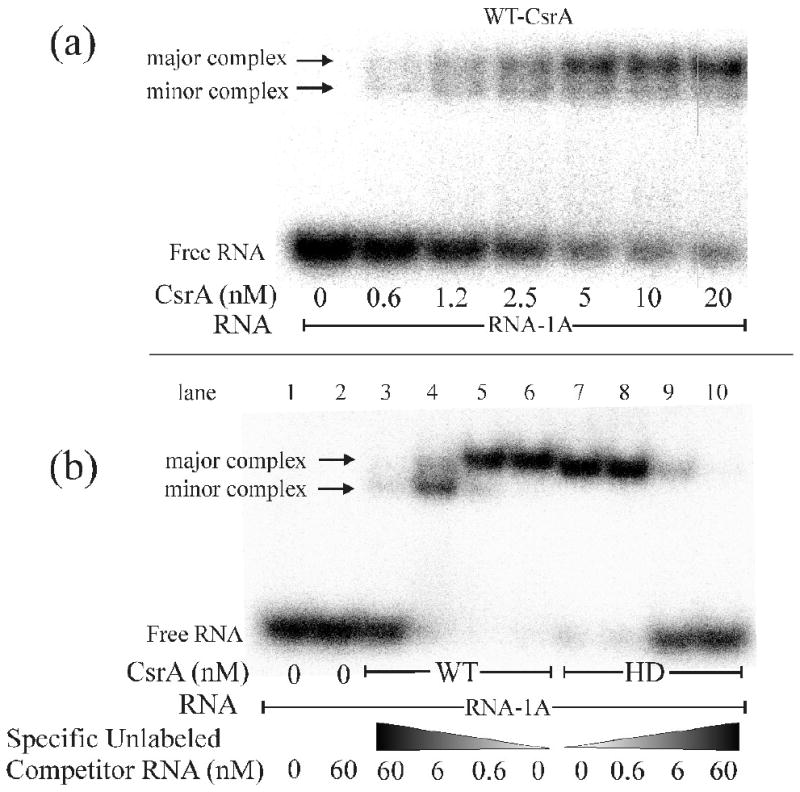Fig. 1.

Electrophoretic Mobility Shift Assay (EMSA) demonstrating that WT-CsrA contains 2 independent RNA binding surfaces while the HD-CsrA contains only one. a) EMSA with WT-CsrA protein showing the presence of a “major” and “minor” shifted complex (arrows), as well as “free RNA”, suggesting that CsrA can bind 2 independent RNAs. b) Competition experiment with increasing concentrations of specific unlabeled competitor RNA. Note that addition of competitor RNA caused a redistribution of the WT-CsrA complex to the lower “minor” position, while HD-CsrA failed to exhibit a secondary complex with additional competitor,
